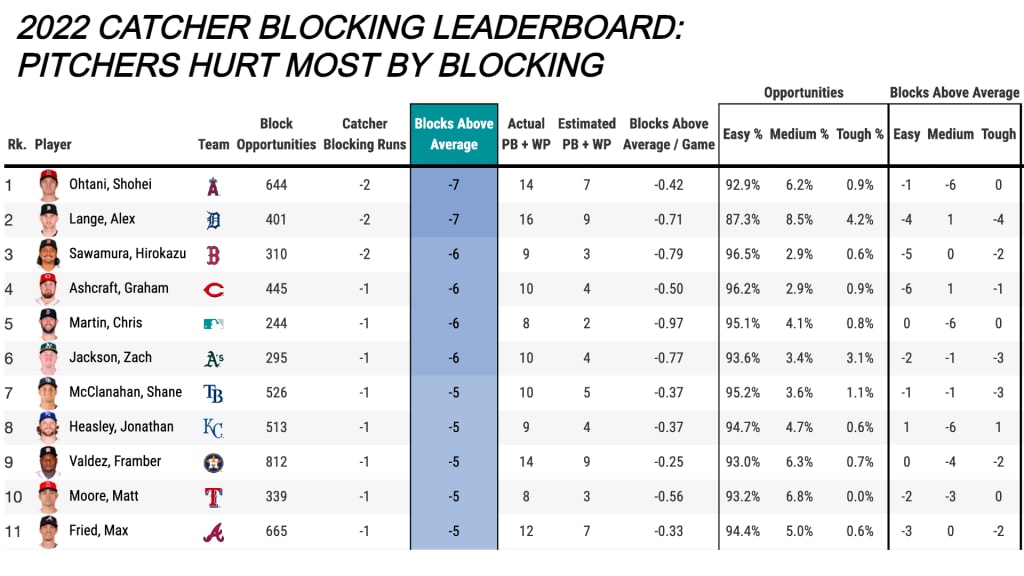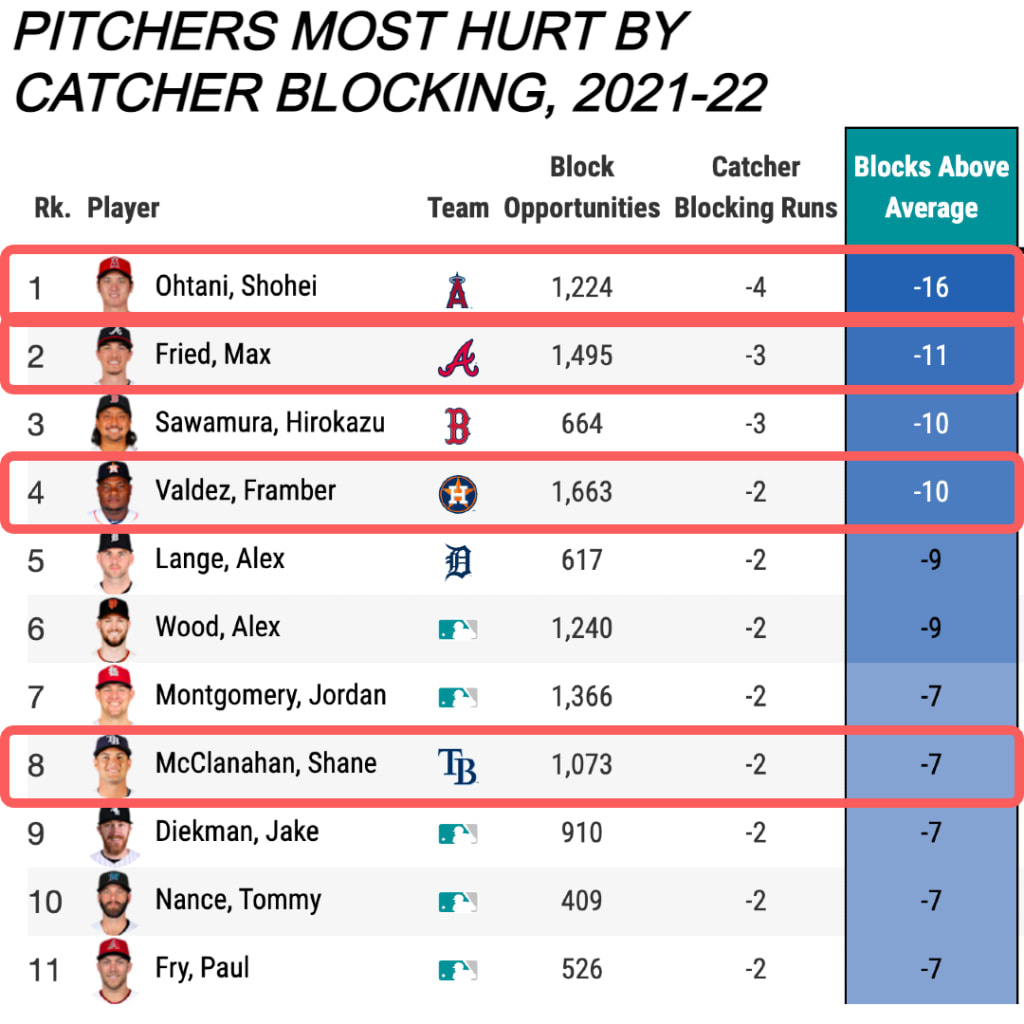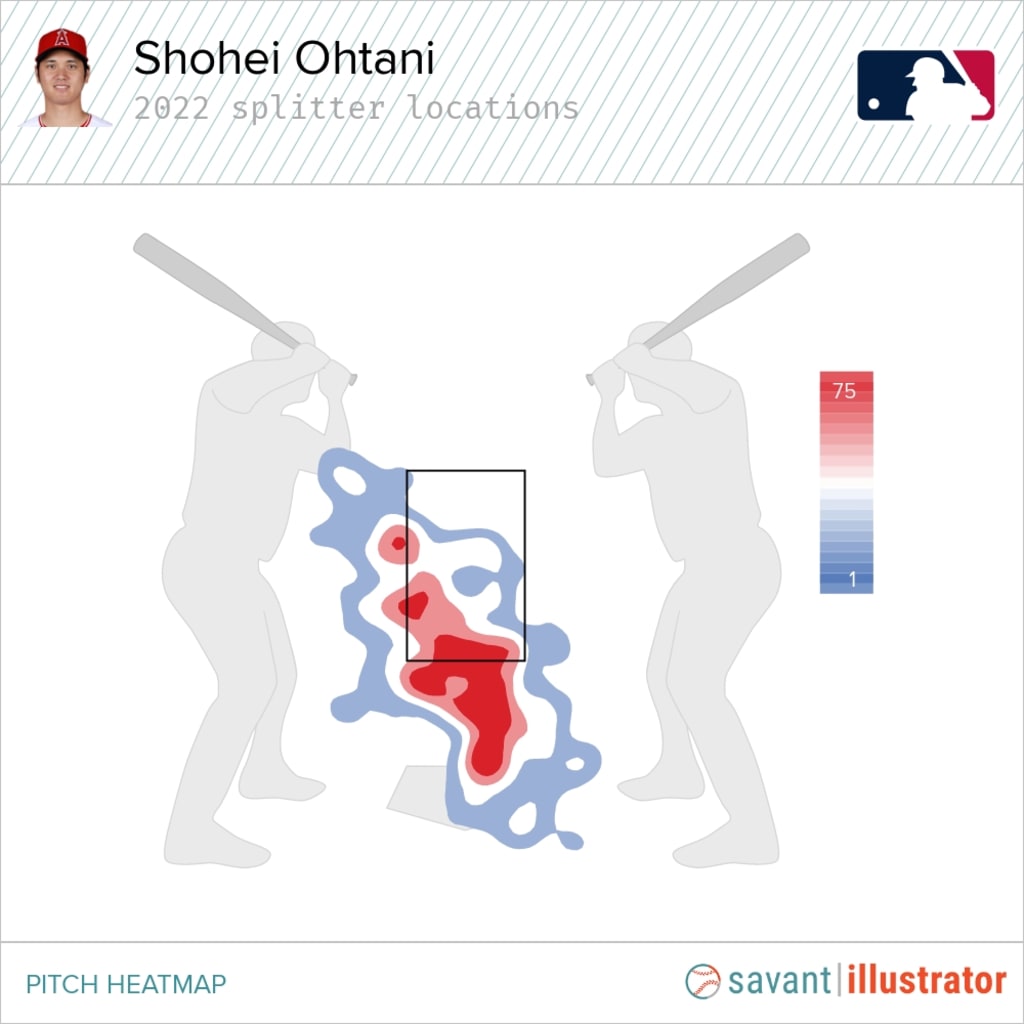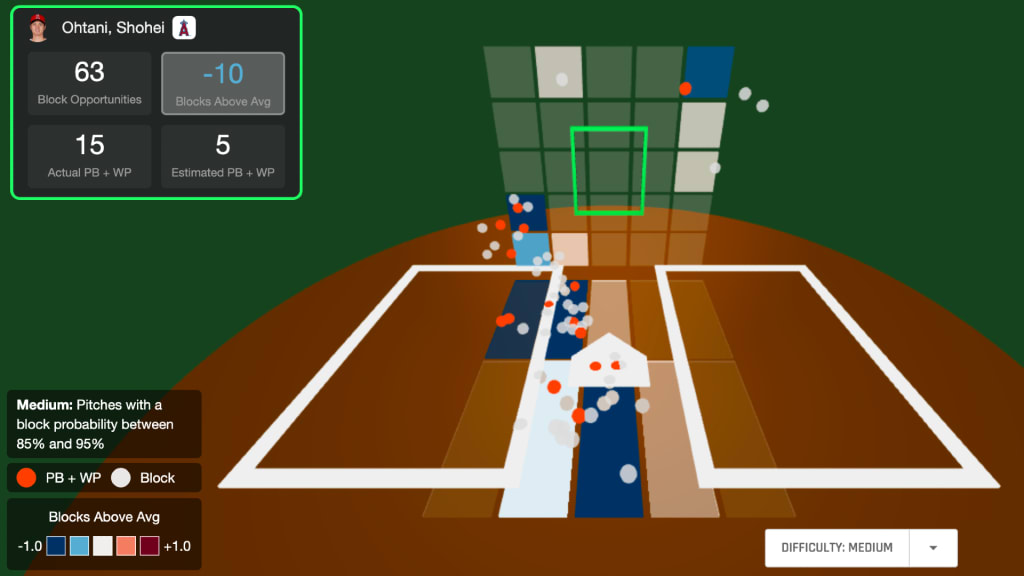One of the most interesting names on Statcast's new catcher blocking leaderboard isn't a catcher at all. It's Shohei Ohtani.
The new metric can show us a lot more than just which catchers were the best and worst at blocking -- which pitchers were helped or hurt the most on the receiving end, for example.
It turns out, no pitcher was hurt more by his catchers' blocking last season than one Shohei Ohtani.

And it wasn't just last season. Ohtani was also hurt the most by blocking in 2021. Ohtani's catchers have been worth -16 Blocks Above Average with him on the mound over the last two seasons, by far the worst of any pitcher.
So let's try to get to the bottom of this.
You might think, maybe the Angels' catchers are just bad at blocking. But that's not really the case. Angels catchers have done a fine job receiving most of the pitchers on the staff. But Ohtani is a different story.
Or you might think, maybe Ohtani was just wild, and throwing pitches that were way too difficult to block. But that's not exactly the case, either. Compare Ohtani to Alex Lange, the pitcher next to him in the "most hurt by blocking" category in 2022. Lange fed his catchers nearly five times more "Tough" blocking chances than Ohtani did -- pitches with a block probability under 85%. In fact, the Angels' catchers were perfectly average on the few Tough chances Ohtani gave them. All of Ohtani's -7 Blocks Above Average came from Medium or Easy chances (85%-plus).
So what happened with Ohtani? Well, here's a look at the pitchers who've been hurt the most by catcher blocking over the last two years. Four of the top 10 are MLB aces: Ohtani (-16 Blocks Above Average), Max Fried (-11), Shane McClanahan (-7) and Framber Valdez (-7). And those last two years are when Ohtani became a true dominant strikeout artist, collecting 375 K's in his 296 1/3 innings.

That gives you a clue. Think about the stuff Ohtani throws: two types of triple-digit fastballs -- four-seamers and sinkers -- big sweeping sliders, tight cutters, looping curves, drop-off-the-table splitters. His catcher has to try to get a glove on all of that, 100 times a game.
"Catching Ohtani is no day at the beach," then-Angels manager Joe Maddon said in 2021. "When it comes to metrics and framing and stuff, it's not easy to frame Shohei Ohtani's pitches. Sometimes, it can just be self-defense in a game."
It's true. Sometimes, Ohtani is just too nasty to catch.
Sometimes, his fastball takes off
Here's a pretty basic example of a missed block with Ohtani pitching. Angels catcher Chad Wallach sets up for an inside fastball, and Ohtani throws an inside fastball -- but it takes off and whizzes past Wallach to the backstop.
Ohtani misses inside with the pitch … but the real reason Wallach can't catch it is because it's 98.9 mph. That happened to Ohtani a few times last season: an upper-90s fastball taking off on Ohtani -- and the catcher -- and getting past him before he can get his mitt to the spot.
For comparison, here's fellow Angels catcher Max Stassi calmly corralling an Oliver Ortega fastball that was the same distance inside as Ohtani's, but came in at a mere 94.7 mph.
Ohtani's four-seamer in 2022 averaged 97.3 mph, topped out at 101.4 mph and hit 100-plus mph 40 times. If you go off the plate with that velocity, it can be hard for even an MLB catcher to react in time.
Then he added a sinker out of nowhere in the middle of the season. A sinker he throws just as hard as his four-seamer, but that breaks an average of over 16 inches horizontally -- and sometimes gets over 20 inches of arm-side run -- where his four-seamer stays true, barely moving three inches.
When Ohtani started doing that, Stassi said his pitcher had started doing "video game stuff."
Sometimes, his sweeper is too much to handle
Ohtani throws the "sweeper" style of slider that gets big horizontal movement. His sweeper was the second-most valuable pitch in baseball last season, tied with Sandy Alcantara's changeup and behind only Dylan Cease's slider.
Ohtani threw his sweeper 37% of the time last season, more than any other pitch, and he used it to collect 82 strikeouts and 191 swings-and-misses. It averaged 14.1 inches of horizontal break.
But throwing a pitch with that much movement, that often, resulted in a few miscues.
Here's an Ohtani sweeper that swept too much -- this one broke 16 inches horizontally, with Ohtani trying to get a chase outside on an 0-2 count.
Here's one that didn't sweep enough -- a backup sweeper that had just 6.8 inches of break and fooled Stassi.
That's a near-10-inch difference in break between two pitches of the same type thrown at the same velocity. Ohtani's catcher has to be ready to cover the entire plate, and more.
Sometimes, his splitter is as unblockable as it is unhittable
And then there's Ohtani's nastiest pitch: the splitter.
Ohtani's splitter can cause the most blocking trouble because he buries it below the strike zone by design to put a hitter away.
Here's where Ohtani threw his splitters in 2022.

Those splitters averaged 89.3 mph with 32 inches of vertical drop. On the one hand, that resulted in hitters whiffing on nearly half their swings against it, and striking out in nearly two thirds of their plate appearances vs. Ohtani that were decided on splitters.
On the other hand, all those splitters thrown in the chase zone, with the aim of being putaway pitches, also added on to Ohtani's missed block totals.
Really, all of those are well-executed two-strike splitters, but they went down as wild pitches.
Take a look at the "Medium" grade blocking opportunities Ohtani gave his catchers in 2021 and '22. The cluster of pitches on the low left corner of the strike zone is a lot of sweepers. The cluster down in the dirt by home plate is a lot of two-strike splitters.

Too many of those ended up as misses on the receiving end. But a lot of the time, that was a byproduct of how nasty Ohtani's stuff is. And the 375 times that nasty stuff became a strikeout were much more important.
